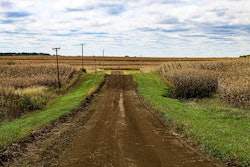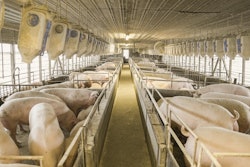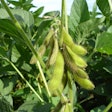
The U.S. Department of Agriculture (USDA) has unveiled a comprehensive plan aimed at enhancing the resilience of the biomass supply chain, fostering environmental sustainability and creating market opportunities for small and mid-sized producers within the domestic bioeconomy.
The report, titled "Building a Resilient Biomass Supply: A Plan to Enable the Bioeconomy in America," is a key deliverable of President Biden’s Executive Order 14081, issued in 2022, which outlined ambitious goals and new priorities to drive action inside and outside of government in support of America's domestic bioeconomy.
Agriculture Secretary Tom Vilsack emphasized the substantial opportunity presented by the increasing demand for biomass, particularly for American farmers, ranchers, and forest landowners, especially in rural areas. He underscored the USDA's commitment to advancing the domestic bioeconomy and creating new markets and jobs through a comprehensive roadmap aimed at strengthening production and preprocessing systems to provide incentives for producers and manufacturers.
Biomass and bioeconomy
The plan highlights biomass as organic material derived from various sources such as crop residues, agricultural and food wastes, forest residuals, livestock, and specific biomass crops grown as feedstocks for producing biobased products. These materials can be utilized to create sustainable fuel, fibers, electricity, construction materials, plastics, insulation, personal care items, and various other biobased products.
According to a USDA BioPreferred Program report, biobased products contributed $489 billion to the U.S. economy in 2021, signifying a more than 5% increase from the previous year. This growth reflects the clear and growing consumer demand for biobased products.
The plan advances the USDA's commitment to developing a circular bioeconomy, promoting the sustainable harvesting, consumption, and reuse of agricultural resources. It emphasizes the need for research and deployment of improved biomass crops, utilization of woody biomass residuals, and the development of markets for biobased products through USDA's BioPreferred Program.
Published alongside the plan is an implementation framework outlining USDA’s planned actions in the coming year to bolster cultivated biomass availability, invest in biobased product infrastructure, and support responsible biomass supply chain development. Additionally, a fact sheet highlighting the Department’s 2023 bioeconomy accomplishments, including $772 million in investments for research, development, and infrastructure involving biofuels, fertilizer production, crop innovations, and biobased products, has been released.
These efforts align with the USDA's strategic goals of addressing climate change, protecting nature, advancing racial justice and rural prosperity, creating better market opportunities, and enhancing food security.


















